Produce Earthquake
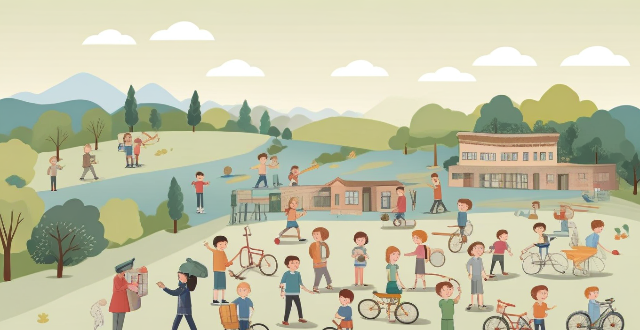
How can schools and universities improve their earthquake preparedness plans ?
The article discusses ways in which educational institutions can improve their earthquake preparedness plans, including conducting regular drills, training staff and students on preparedness, strengthening building structures, developing an emergency communication plan, and collaborating with local authorities and organizations. By implementing these strategies, schools and universities can ensure the safety of their communities during potentially devastating natural disasters.

Can mobile apps help with earthquake detection and response ?
Mobile apps can significantly contribute to earthquake detection and response by providing immediate alerts and enhancing the detection network. These apps use smartphone accelerometers to sense seismic waves, aggregate data from multiple devices, and rapidly identify quake epicenters. Key features include real-time alerts, customizable thresholds, and widespread infrastructure. Benefits include critical warning time and low implementation cost, but limitations such as dependency on user devices and infrastructure availability exist. Top apps like Google's Early Warning System and MyShake aid in earthquake detection, and best practices include ensuring proper configuration, staying updated, and active participation. Mobile apps offer a cost-effective solution for disaster response and management globally.

What are the best locations to seek shelter during an earthquake ?
Earthquakes are unpredictable natural disasters that can cause significant damage and loss of life. It is important to know where to seek shelter during an earthquake to minimize the risk of injury or death. The best locations to seek shelter during an earthquake include taking cover under sturdy furniture, against interior walls away from windows, bookcases, or tall furniture that could fall on you, in open spaces away from buildings, trees, and power lines, and in underground structures such as tunnels or subway stations. If you are driving during an earthquake, stop safely and stay in your vehicle until the shaking stops. By following these guidelines, you can increase your chances of surviving an earthquake without injury.

What are the key steps in performing an earthquake drill at home ?
Earthquake drills are crucial for preparing your family to react quickly and safely during an actual earthquake. Here are the key steps to perform an effective earthquake drill at home: 1. **Preparation**: Inform family members about the purpose of the drill, assign roles, identify safe places, and secure objects. 2. **Drop, Cover, and Hold On**: Drop to your hands and knees, crawl to a safe place, and hold on until the shaking stops. 3. **Relocation Drill**: Practice evacuating safely, agree on a meeting spot, and check in with all family members. 4. **After the Drill**: Review performance, update the emergency plan, and stay informed about local warning systems. 5. **Repeat**: Conduct regular earthquake drills at least once every six months to keep procedures fresh in everyone's minds.
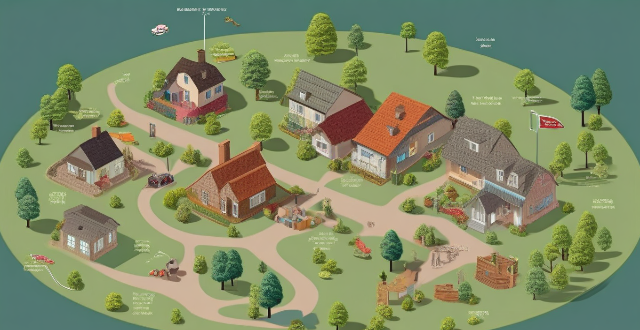
How can I prepare my home for an earthquake to minimize damage ?
Earthquakes are natural disasters that can cause significant damage to homes and properties. However, there are several steps you can take to prepare your home for an earthquake and minimize the potential damage. Some tips include securing large appliances and furniture, reinforcing your home's structure, securing plumbing and gas lines, and preparing for aftershocks. By following these tips, you can help minimize the damage caused by an earthquake and protect yourself and your family.
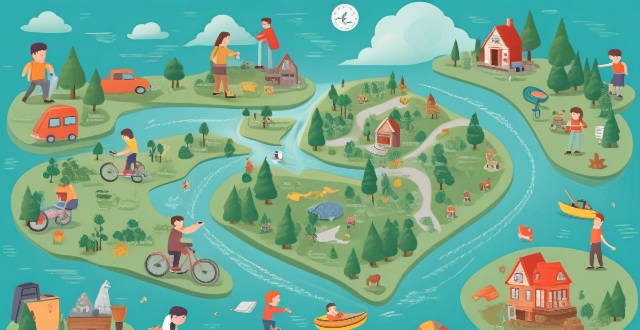
How can I educate my family about earthquake safety and evacuation procedures ?
Educating your family about earthquake safety and evacuation procedures is crucial due to the unpredictable nature of earthquakes. Understanding the basics of earthquakes, creating a safety plan, learning evacuation procedures, conducting drills, and staying informed are all important steps in ensuring your family's safety during an earthquake. By following these steps, you can prepare your family for earthquakes and ensure they know what to do in case of an emergency.

How can pet owners ensure the safety of their animals during an earthquake ?
Pet owners play a crucial role in ensuring the safety of their pets during emergencies like earthquakes. Here are some tips to help you protect your pets in case of seismic activity: 1. Prepare an emergency kit for your pets, including essential items such as water, food, medications, medical records, a first aid kit, a collar and leash, a carrier or crate, toys, and bedding. 2. Create a safe space for your pet by identifying an interior room without windows, such as a bathroom or closet, where you can take your pet during the earthquake. Avoid areas with heavy objects that could fall and cause injury. 3. Practice evacuation drills with your family and pets, familiarizing your pet with its carrier or crate and teaching it to go to its designated safe space on command. 4. Stay informed about earthquake preparedness by following local authorities and connecting with your veterinarian for advice on how to handle your specific pet during an emergency situation. By following these steps, you can help ensure the safety of your pets during an earthquake. Remember, being prepared is key to protecting both yourself and your beloved animals in times of crisis.

Is it safer to stay in a high-rise building during an earthquake or evacuate ?
The article discusses the safety considerations for staying in or evacuating a high-rise building during an earthquake. It outlines the advantages and disadvantages of both options, such as structural integrity, risk of falling debris, and access to emergency services. The decision should be based on factors like the severity of the earthquake, the building's structural integrity, and available safety precautions. Being prepared with an emergency kit and knowledge of proper safety procedures is crucial for ensuring well-being during these events.
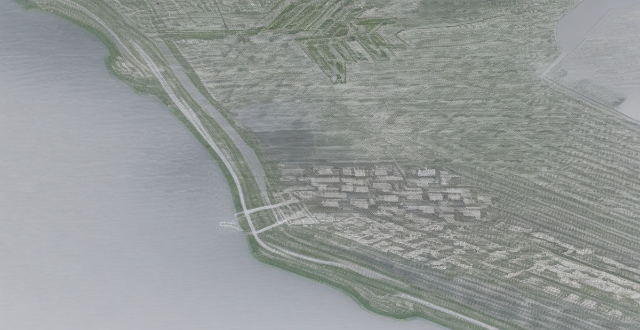
Are certain types of buildings more resistant to earthquakes than others ?
The article discusses the factors that contribute to a building's earthquake resistance and identifies certain types of buildings that are more resistant to earthquakes. The key factors contributing to earthquake resistance include structural design, materials used, foundation type, age, and maintenance. Steel-framed buildings, reinforced concrete buildings, wood-framed buildings, and prefabricated buildings are all examples of structures that can be designed and constructed with earthquake resistance in mind. Proper construction techniques and advanced engineering techniques such as base isolation or energy dissipation devices can further enhance the resilience of these buildings.
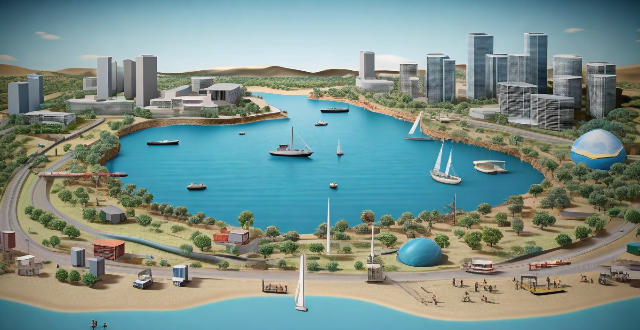
What roles do early warning systems play in earthquake preparedness ?
Early warning systems are vital in earthquake preparedness, providing immediate alerts, coordinating emergency responses, implementing structural protection measures, and supporting post-event recovery efforts. They enable quicker reactions, automated responses for critical infrastructure, enhance public awareness through education campaigns, and ensure widespread dissemination of information. These systems also facilitate pre-emptive actions by emergency services, transportation management, evacuation planning, and route optimization. In terms of structural protection, early warning integration in smart buildings and adaptive construction techniques improve infrastructure resilience. Post-event recovery support includes rapid damage assessment, community recovery plans, efficient resource allocation, and psychological support. Overall, early warning systems play a crucial role in saving lives, minimizing economic losses, and speeding up recovery processes in societies prone to seismic activities.

Is there a standard list of supplies for an earthquake survival kit ?
There is a standard list of supplies recommended for an earthquake survival kit, including water, non-perishable food, first aid supplies, warm clothing, shelter items, tools and supplies, important documents, and miscellaneous items. It's important to customize your kit based on your specific needs and circumstances.

What actions should I take immediately after an earthquake occurs ?
The text provides a list of immediate actions to take after an earthquake occurs, including dropping, covering, and holding on; staying where you are; checking for injuries and damage; turning off utilities if necessary; evacuating safely; staying informed; and remaining calm and helping others. It emphasizes the importance of adapting actions based on specific circumstances and guidance from emergency responders.
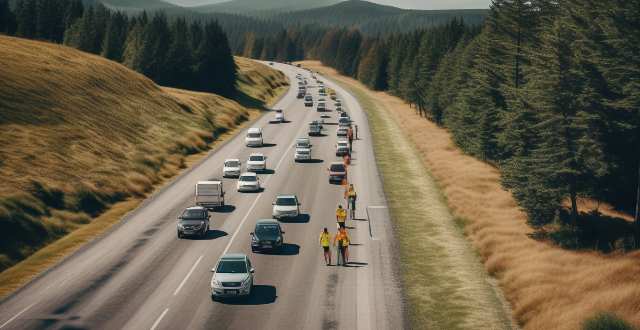
What are the primary risks associated with driving during or immediately after an earthquake ?
Driving during or immediately after an earthquake poses significant risks, including damaged roads and infrastructure, distracted drivers, increased traffic congestion, emergency response vehicles obstructions, communication disruptions, fuel shortages, and environmental hazards. It is crucial to avoid driving if possible and follow official safety protocols. If driving is necessary, stay alert and prioritize safety.

How important is an earthquake emergency kit, and what should it contain ?
The text discusses the importance of being prepared for earthquakes by having an emergency kit with essential items such as water, food, a first aid kit, light sources, clothing, bedding or shelter, tools, sanitation and personal needs, important documents, cash, communication tools, maps and information. It also mentions additional considerations like pet care and multi-tools.

In which regions of the world are earthquakes most common, and why ?
**Earthquakes: Understanding the Most Common Regions and Their Causes** Earthquakes are natural disasters that can occur worldwide but are most common in specific regions due to tectonic activities. The theory of plate tectonics explains how Earth's crust is divided into plates that interact through processes like subduction, collision, and separation, causing seismic activity at their boundaries. Major earthquake-prone regions include the Pacific Ring of Fire, the Himalayan Belt, the Mediterranean-Himalayan Belt, South America, and New Zealand. These areas experience frequent and intense earthquakes due to their locations along multiple convergent plate boundaries and active subduction zones. Factors contributing to high seismic activity include plate boundaries, subduction zones, transform faults, and volcanic activity. Understanding these patterns is crucial for earthquake preparedness and mitigation efforts.

Can sportswear companies produce more sustainable products ?
Sportswear companies can produce more sustainable products by using eco-friendly materials, reducing waste, and adopting circular economy principles.

Do hybrid cars produce less pollution than traditional gasoline cars ?
Hybrid cars generally produce less pollution than traditional gasoline cars, but the comparison is not straightforward and various factors must be taken into account.

How much energy does a zinc-carbon battery produce ?
The energy production of a zinc-carbon battery is determined by factors such as its size, voltage, and capacity. The process involves a chemical reaction between zinc and manganese dioxide, where larger batteries typically yield higher energy output due to more reacting material. The nominal voltage of a standard zinc-carbon battery stands at 1.5 volts, and the total energy can be calculated by multiplying this voltage with the current over time. Capacity, measured in ampere-hours (Ah), represents the maximum charge a battery can deliver. For instance, an AA-sized zinc-carbon battery with a 0.8 Ah capacity can produce approximately 1.2 watt-hours or 0.0012 kilowatt-hours of energy under ideal conditions.

How do electric cars compare to hybrid cars ?
Electric cars run solely on electricity and produce zero emissions, while hybrid cars combine a gasoline engine with an electric motor for improved fuel efficiency. Electric cars offer environmental benefits and lower operating costs but have limited range and long charging times. Hybrids provide a balance between gasoline-powered vehicles and electric cars, with improved fuel efficiency and no range limitations but still rely on gasoline and produce emissions. The choice between the two often depends on individual needs and preferences.

How can I incorporate seasonal ingredients into my holiday cooking ?
Incorporating seasonal ingredients into your holiday cooking is not only a way to serve the freshest and most flavorful dishes but also supports local farmers and reduces the carbon footprint of your meal. Here are some tips on how to make the most of what's in season: 1. Know Your Seasonal Produce: Research local seasonality and consult seasonal produce guides to find out what fruits and vegetables are in season in your area. 2. Plan Your Menu Around Seasonal Ingredients: Choose one or two seasonal items as the stars of your dish, and build flavor profiles around them. 3. Visit Farmers Markets and CSAs: Support local farmers by shopping at farmers markets or joining a Community Supported Agriculture (CSA) program. Get inspired by the variety of seasonal produce available there. 4. Experiment with New Recipes: Try global cuisines that traditionally use seasonal ingredients, or adapt family favorites by swapping out non-seasonal ingredients for what's currently fresh. 5. Use Seasonal Ingredients Creatively: Swap out sides for in-season vegetables like parsnips, turnips, or sweet potatoes, and garnish with thinly sliced radishes, cucumbers, or even edible flowers for an extra pop of color and freshness. 6. Don't Forget About Meat and Dairy: Choose seasonal proteins like game meats in the fall and winter, and consider seafood that is in season for coastal holiday celebrations. Opt for local dairy products like cheeses which can have seasonal variations in taste and quality. 7. Preserve the Bounty: If you come across a great deal on seasonal produce, consider preserving it through canning, pickling, or freezing to enjoy later in the year.

Can you suggest any food markets that should not be missed when traveling ?
Food markets around the world offer a window into local culture and cuisine. Here are some must-visit food markets: 1\. Boqueria Market, Barcelona, Spain: Known for its fresh produce, seafood, and tapas bars. 2\. Grand Bazaar, Istanbul, Turkey: Offers Turkish delights, spices, and sweets. 3\. La Boqueria, Mexico City, Mexico: A feast for the senses with vibrant colors and aromatic smells. 4\. Kreta Ayer Wet Market, Singapore: Located in Chinatown and known for live seafood and Chinese herbs. 5\. Tsukiji Fish Market, Tokyo, Japan: Renowned for its early morning tuna auctions and seafood. 6\. Mercado de San Miguel, Madrid, Spain: Housed in a historic building with gourmet tapas and wines. 7\. Jemaa el-Fnaa Market, Marrakech, Morocco: A night market surrounded by food stalls offering Moroccan cuisine. 8\. Pike Place Market, Seattle, USA: Known for its fresh produce, artisanal foods, and local crafts. 9\. Queen Victoria Market, Melbourne, Australia: Offers a mix of fresh produce, gourmet foods, and international cuisine. 10\. Or Tor Kor Market, Bangkok, Thailand: Known for its fresh produce, street food, and local ingredients. These markets provide not only delicious food but also a chance to immerse oneself in the local culture.

What are the alternatives to fossil fuels for energy production ?
The article discusses various alternatives to fossil fuels for energy production, including solar energy, wind energy, hydroelectric power, geothermal energy, biomass energy, and nuclear energy. It explains the working principles of each alternative and their advantages and disadvantages. The main advantage of these alternatives is that they produce clean energy with minimal greenhouse gas emissions, reducing the impact on the environment and climate change. However, some of them require significant investment and infrastructure development, while others have safety concerns or limited availability. Overall, the article highlights the potential of these alternatives in providing sustainable and reliable sources of energy for the future.

Is organic food healthier than non-organic food ?
The debate over whether organic food is healthier than non-organic food has been ongoing for decades. While some argue that organic food offers more nutritional benefits and is better for the environment, others believe that the differences are negligible and that non-organic food can be just as healthy. In this article, we will explore both sides of the argument and try to answer the question: is organic food healthier than non-organic food? Arguments in favor of organic food include nutritional benefits, pesticide reduction, and environmental impact. Organic farming practices focus on building healthy soil and growing strong plants, which results in produce that is richer in nutrients like vitamins, minerals, and antioxidants. Additionally, organic food is grown without the use of synthetic pesticides and fertilizers, reducing the risk of harmful chemicals ending up in our food supply. Finally, organic farming practices promote biodiversity, reduce pollution, and help preserve natural resources. Arguments against organic food include minimal nutritional differences, low pesticide residues, and higher cost. While some studies have found that organic food is more nutritious than non-organic food, other research suggests that the differences are minimal. The levels of pesticides found in non-organic produce are generally well below what is considered safe by regulatory agencies, and washing produce thoroughly can further reduce pesticide residues. However, one of the biggest drawbacks of organic food is its higher cost compared to non-organic options. Ultimately, the decision of whether to choose organic or non-organic food depends on personal preference and individual circumstances. If you prioritize nutrition, reducing your exposure to pesticides, and supporting environmentally friendly farming practices, then organic food may be the way to go. However, if you are concerned about cost or believe that the nutritional differences between organic and non-organic food are minimal, then non-organic options may be suitable for you.